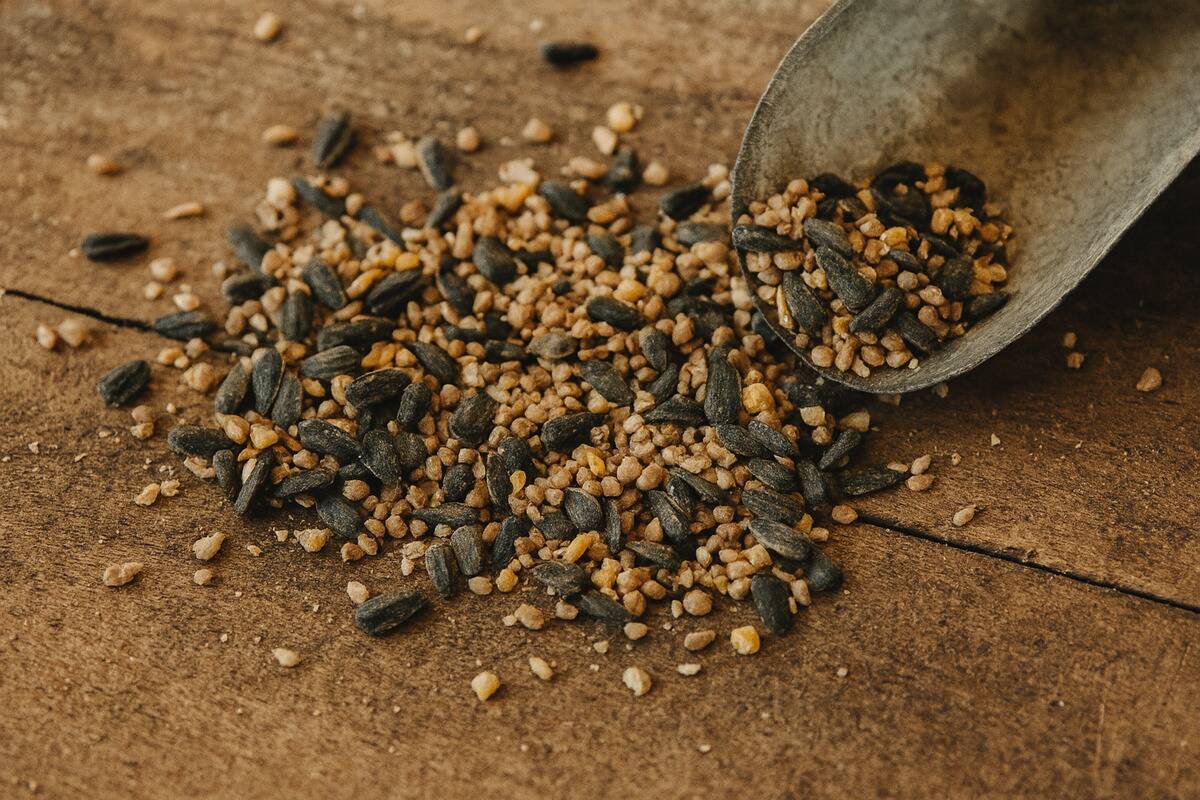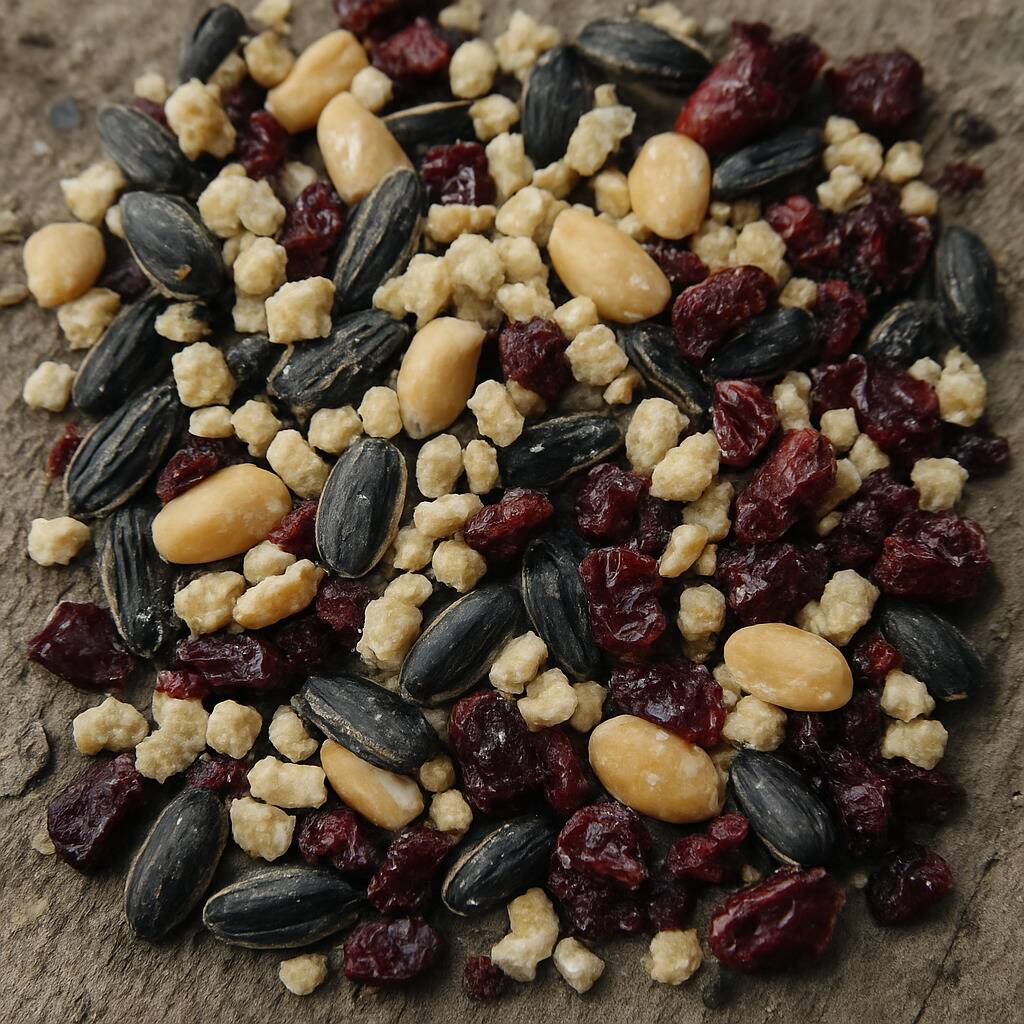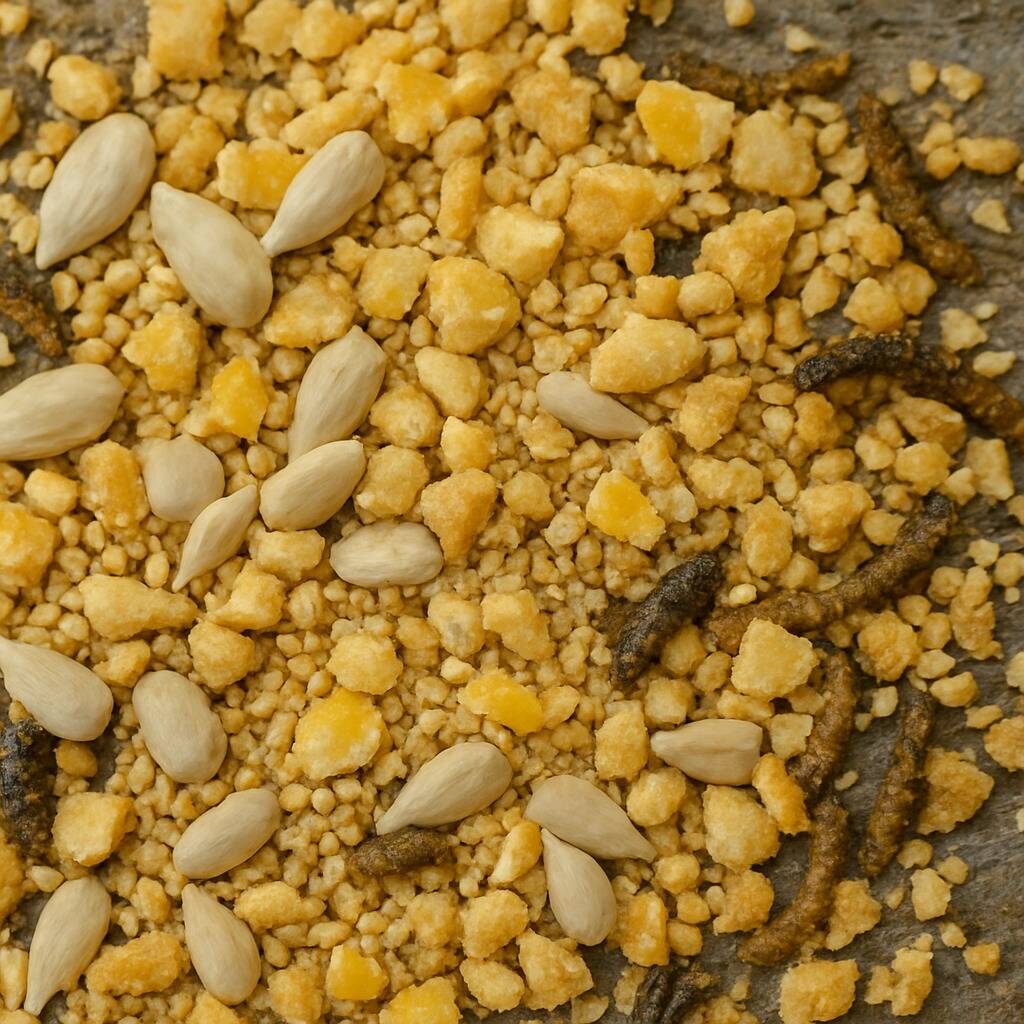How To Make The Best DIY Birdseed Mix
Feeding birds is a great way to support wildlife in your neighborhood, plus you get the chance to birdwatch from your own backyard. And when you mix your own birdseed, you can save money and avoid fillers while making sure you’re giving the birds exactly what they need. What you might not know is that different mixes attract different birds. And once you know who’s visiting your yard, you can start experimenting with your blends to get the birds you want to come back. Here are six simple birdseed mixes for you to try in your backyard bird feeder.
The Backyard Classic

This is a reliable, go-to mix that attracts a wide range of common backyard birds like cardinals, finches, chickadees, and nuthatches. It's simple, easy to make, and a great place to start on your DIY birdseed journey.
Recipe:
2 parts black-oil sunflower seeds
1 part white millet
1 part cracked corn
½ part unsalted, chopped peanuts
This one works well in tube feeders or hopper feeders, and you'll probably see more bird activity almost immediately. If you’re only trying one mix on this list, start here!
The Finch Favorite

Goldfinches, pine siskins, and redpolls are small but mighty birds. They love tiny, oily seeds that they can pluck out with their slender beaks, so this mix will keep them coming back for more.
Recipe:
2 parts nyjer seed
1 part finely chopped sunflower hearts
1 part finely ground millet
Use a finch feeder or a mesh sock to keep the seeds from spilling all over the place. It’s a bit of a specialty mix, but once finches find it, they’ll visit every day like clockwork. You’ll start waking up to their sweet chatter as they squabble for space at your birdfeeder.
The Winter Warmer

In the colder months, birds burn more energy staying warm. A high-fat mix can give them the extra calories they need to replenish their energy. This recipe is like comfort food for them.
Recipe:
1 part black-oil sunflower seeds
1 part chopped suet crumbles or suet pellets
1 part raw peanuts (chopped or shelled)
½ part raisins or chopped dried cranberries
Store this mix in a dry place and only put out as much as will be eaten quickly, since suet and fruit can spoil. This mix is especially loved by woodpeckers, nuthatches, and jays, but can help all birds when winter comes.
The No-Mess Mix

Some people are turned off from putting out birdseed because they want to keep the area under their feeders clean. This mix skips hulls and shells entirely, meaning less cleanup for you. Plus, it's easier for the birds to eat, too.
Recipe:
2 parts shelled sunflower seeds (hearts or chips)
1 part hulled millet
1 part chopped peanuts
½ part dried mealworms
This is great for patios or apartment balconies where mess matters. It also helps in winter when birds need food that’s easy to eat quickly. Just store the mix in a cool place to keep it from clumping.
The Ground Feeder Blend

Not all birds like to perch on feeders. Mourning doves, towhees, juncos, and sparrows often forage on the ground. If you want to see more of these birds, this hearty mix better suits their eating style.
Recipe:
2 parts white millet
1 part cracked corn
1 part whole oats
½ part black-oil sunflower seeds
Scatter this under bushes or underneath a tray feeder. Just keep an eye out for squirrels. You might need to rotate where you feed or use a simple screen to keep the bigger critters out. It’s not the tidiest way to feed birds, but the birds sure do love it!
The Summer Fruit and Seed Mix

When insects and berries are easy to find in warmer months, some birds don’t visit bird feeders as much. This mix includes a touch of sweetness to make your feeders more attractive to fruit-loving birds like catbirds and orioles.
Recipe:
1 part sunflower hearts
1 part chopped dried cherries or raisins
1 part white millet
½ part finely crushed unsalted peanuts
Keep an eye on this mix as it can go moldy quickly in hot or humid conditions. Put it out in the early morning or evening, and make sure to keep your feeders clean. It’s not meant to be out all day, but it can bring an extra few colorful guests to your yard
Mix, Watch, Repeat

Making your own birdseed blends is part experiment, part recipe. Once you start paying attention, you’ll start noticing who’s visiting, but also what they like and what they ignore. And soon, you’ll find the mix that works best for you and the birds. The best part? You don’t need anything fancy to get started. Just a few ingredients, a good recipe, and a bird feeder. Happy birdwatching!





